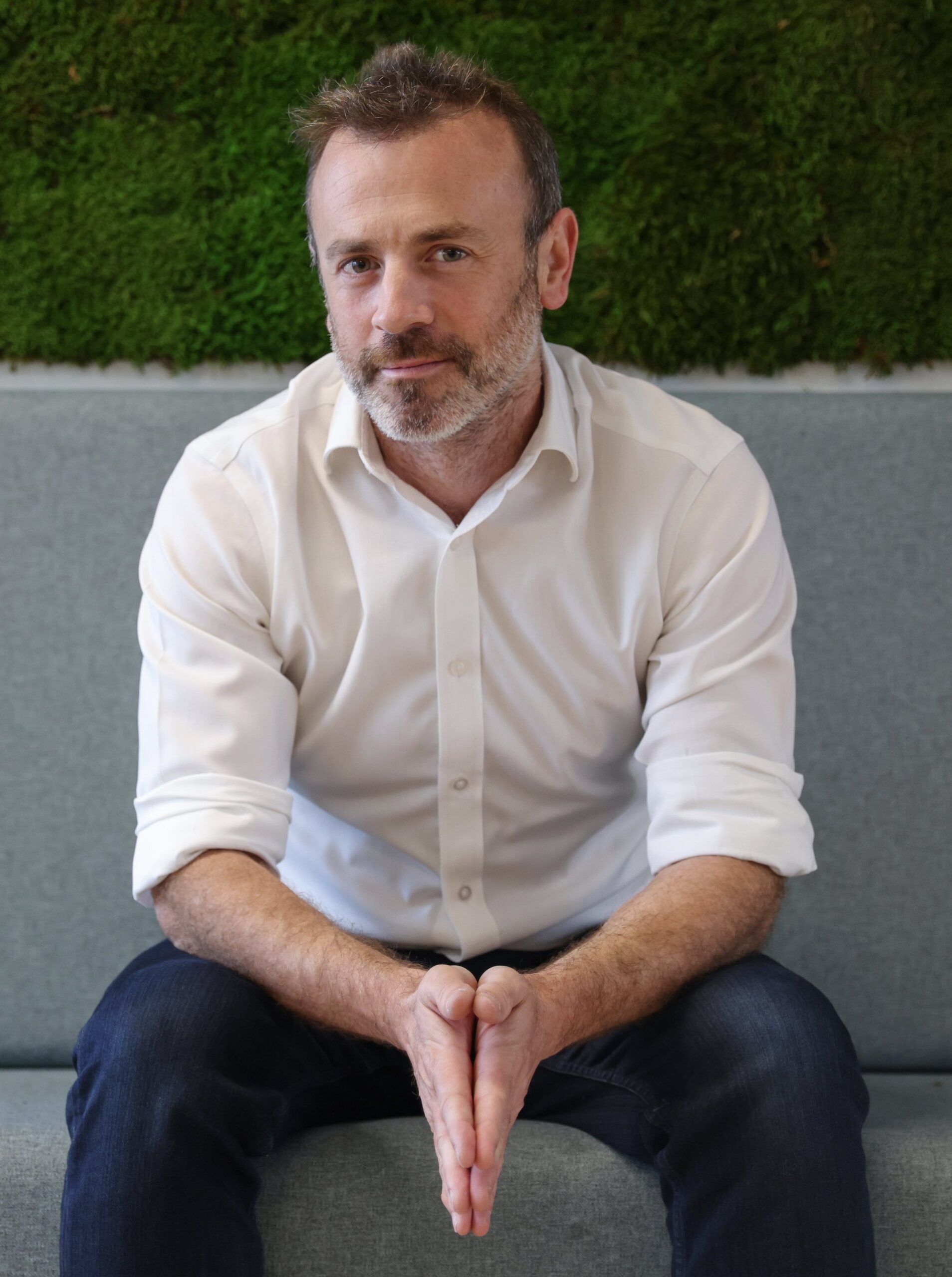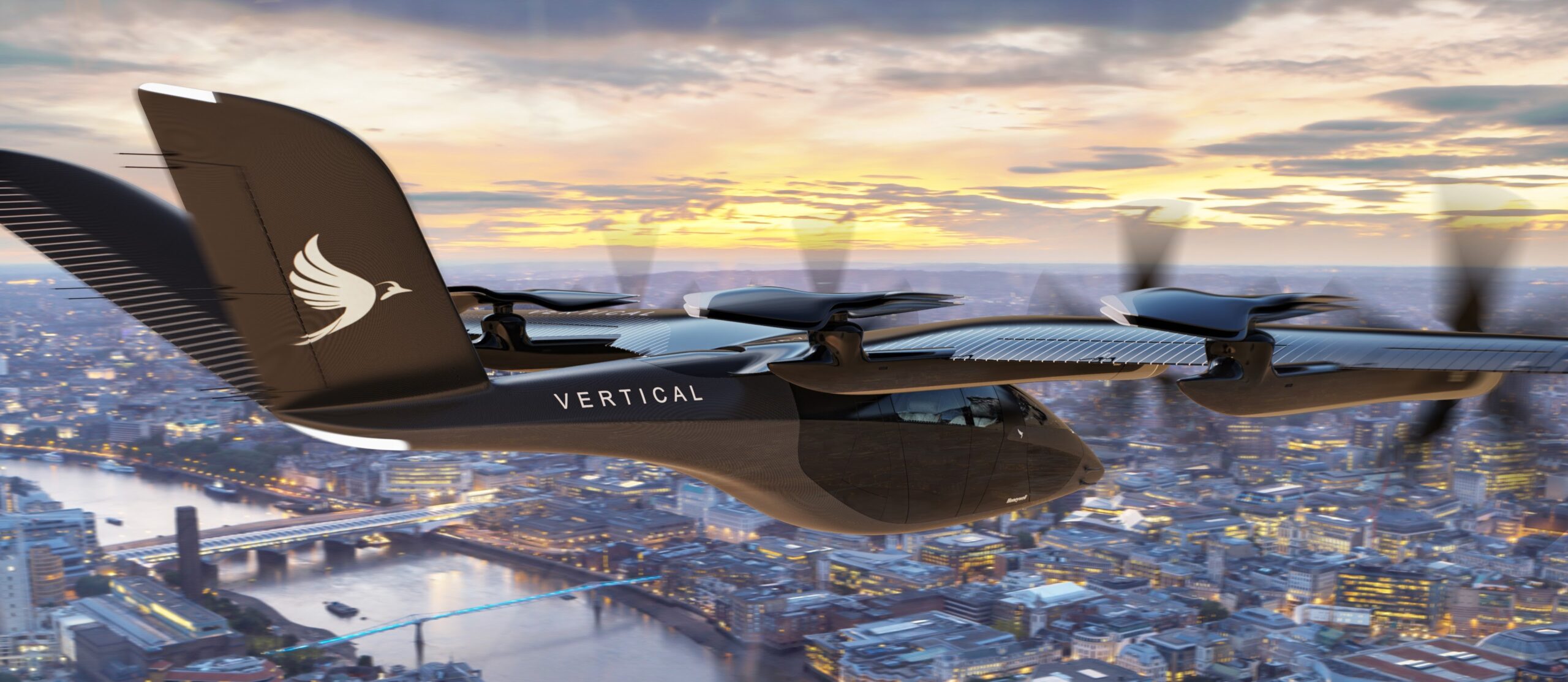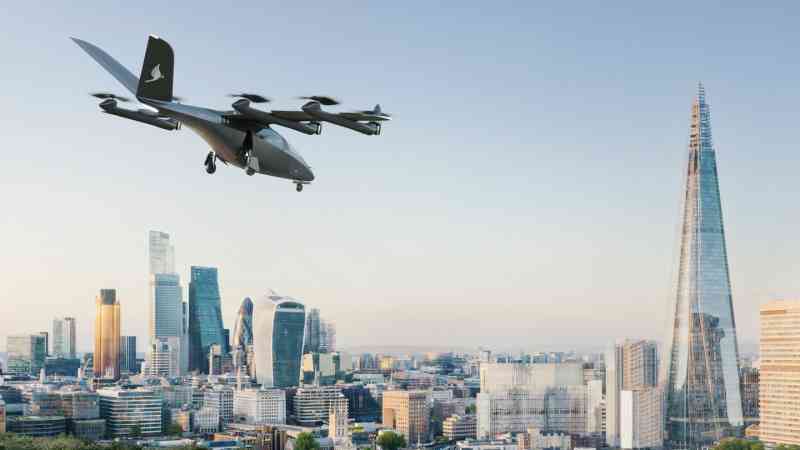Vertical Aerospace shrugs off Rolls-Royce exit from flying taxis
Its first prototype crashed in testing a little under a year ago. Rolls-Royce, its early shareholder and key technology supplier, pulled out three months ago. And its New York-quoted shares, which once valued the company at more than £2 billion, are bombed out. So, as the aerospace industry descends today on Hampshire for the largest Farnborough Air Show to date, the question is: will Vertical Aerospace, Britain’s big hope for the future of advanced air mobility, better known as electric flying taxis, ever get off the ground?
Vertical Aerospace won’t be showing its VX4, eight-rotor, battery-powered vertical take-off and landing vehicle at this year’s Farnborough. That’s mainly because its first prototype is in bits in various laboratories after unmanned testing last August ended abruptly in an unplanned 30ft rapid descent and collision with the tarmac of Cotswold airport. A second prototype is in a hangar at the airfield in Gloucestershire being prepared for an imminent new round of testing, this time with a pilot.
Nevertheless, despite a low-key presence at Farnborough, Vertical Aerospace is, at least metaphorically, back in take-off mode. Its scheduled testing and regulatory certification regime should mean that it flies its first dummy runs into Heathrow along existing helicopter flight corridors by the end of the year. The departure of Rolls-Royce has been dismissed as more of an internal issue with that company than a commentary on Vertical. And it is preparing a capital markets day to attract new investors and money to drive the business to industrialisation.
Vertical Aerospace is a Bristol-based start-up founded in 2016 by Stephen Fitzpatrick, the Ovo Energy billionaire, who committed to the sci-fi ambition of flying electric cars while he was stuck in an interminable, polluted traffic jam in São Paulo. Eight years on, Vertical is still planning to get the VX4, capable of flying at 150mph and with a stated range of 100 miles on fully charged battery stacks, into commercial production and to first deliveries in 2027.
Fitzpatrick, 46, initially envisaged a future of electric vertical take-off and landing vehicles, so-called eVTOLs, to be commonplace enough to be as easy to use as, say, dialling up an Uber. That, though, is decades away. At an initial price of $4 million apiece for a VX4, the first users will be the super-wealthy. They might, for instance, use one on a shuttle between the vertiport (a heliport, but for eVTOLs) under construction at Bicester in Oxfordshire to Heathrow operated by Virgin Atlantic as part of the airline’s Upper Class package for passengers to the United States.
In time, eVTOL flights could be used for tourism or sightseeing or between key business locations where existing transport infrastructure does not exist or is poor or slow. In Britain, travelling between Manchester and Leeds is cited as an obvious example.
The hurdles remain high for eVTOLs in general and for Vertical, in particular. They need rigorous testing to prove their battery and powertrain technology. It must be proved that they can be commercially viable in production. It must be shown, too, that the vehicles are safe, with all the myriad obstacles that throws up in certification with multiple agencies worldwide, starting with Britain’s Civil Aviation Authority.

Michael Cervenka quit as the head of future technology at Rolls-Royce to become chief technology officer of Vertical in 2019. On the question of public acceptance of eVTOLs, the argument is that essentially they are helicopter replacements. Their zero-emission powertrains replace gas-guzzling air pollution, while, instead of the wup-wup-wup noise pollution of helicopters, there will be (it is claimed, especially important in urban areas) a hum no greater than that of a kitchen fridge.
On levels of demand, Cervenka, 49, argues that Vertical has a $6 billion order book for 1,500 aircraft throughout Britain, Europe, North and South America and the Far East. Launch operators will include Virgin Atlantic, American Airlines and Japan Airlines. Avolon, the aircraft leasing company, has an order for 500.
He admits that Vertical has suffered “reputational damage” in the past year and that the crash of the first prototype was demoralising for the company’s 350 staff. But he argues, too, that any aeronautical engineer will have recognised “the gold dust” of lessons learnt and data captured from the failed propeller blade and subsequent power distribution outage that caused the failure.
The second prototype is said to be far more sophisticated, with a third aircraft in production considered to be even more so, boasting new propellers and electrical power units, sized-down batteries and overhauled avionics from Honeywell, the American industrial conglomerate, and a lightweight fuselage from Leonardo, the Italian helicopter maker, and Britain’s own GKN.
Crucial to the programme has been the realisation that until now battery technology for electric aviation simply did not exist. Vertical has been forced to design and engineer its own battery system in a multimillion-pound investment at a site outside Bristol.
Any damage from the decision in the spring by Rolls-Royce to walk away from the programme was more optical than actual, according to Cervenka. It was a corporate decision by Tufan Erginbilgic, the new Rolls chief executive, to scale down a commitment to electric aviation because of the cost of investment and projected years of losses at a time when the FTSE 100 company is trying to get its investment-grade credit rating back and to make money.
In any event, Rolls will pay compensation to Vertical. It is not a material amount for Rolls, but it is significant (albeit as yet undisclosed) for Vertical, which in its last filings reported cash reserves of only £49 million.

After its listing in New York in 2022 via a “blank-cheque” company, or Spac, a special-purpose acquisition vehicle, Vertical’s market valuation hit $2.3 billion. However, investors soon fell out of love with the armada of newly floated, technology-based blank-cheque businesses and Vertical’s shares plummeted. Today it is valued at less than $200 million.
Vertical has been burning through £90 million to £100 million a year and has been relying on cash injections from Fitzpatrick, who retains a 72 per cent stake, and taxpayer grants from the UK Aerospace Technology Institute. If initial test pilot sorties prove blip-free in the weeks ahead, it will seek new money from new investors.
The prospect of a successful fundraising maintains Vertical’s dream of making the journey to industrialisation and commercialisation. It will require hundreds of millions of dollars, says Cervenka, who believes that there will be production of only a few dozen VX4s in 2027 but of the “low thousands in the early 2030s” from multiple assembly lines worldwide to be close to customers in the Americas and Japan. “We may not be the first to market [a nod to competition from the likes of Volocopter, Lillium, Joby, Archer and Eve], but we won’t be far behind.”




Post Comment